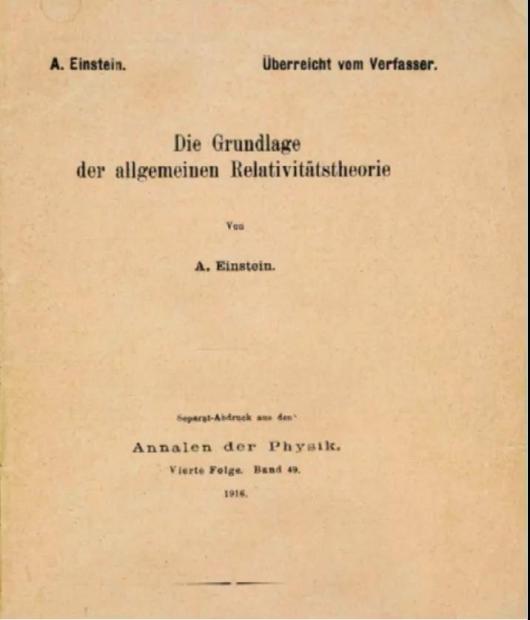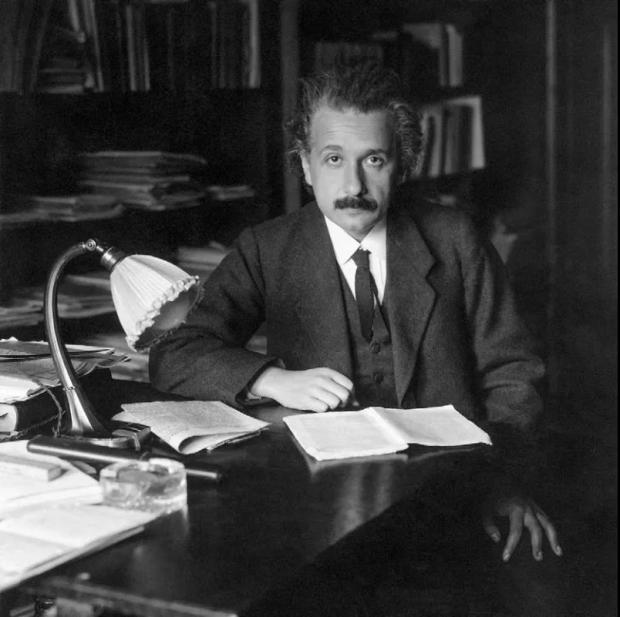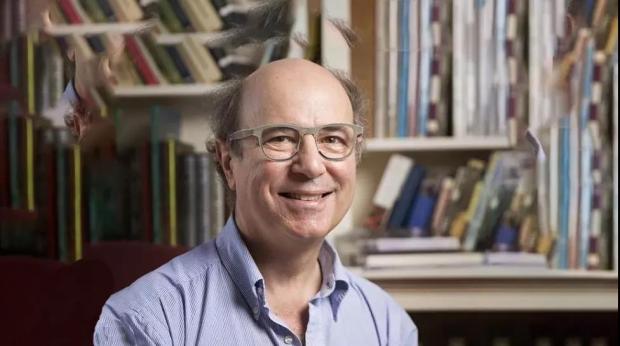阅读:0
听报道
撰文 | Frank Wilczek
翻译 | 胡风、梁丁当
编辑 | 王茹茹
中文版

爱因斯坦发表的《广义相对论基础》
在过去的一个世纪里,科学期刊与机构变得更加专业化,留给个人风格的空间日益狭窄。
阿尔伯特·爱因斯坦1915年的杰作《广义相对论基础》 (The Foundation of the General Theory of Relativity),读起来是一种享受。正如我跟学生们说的,作为相对论的问世之作,这篇论文仍然是对该理论最好的介绍。但如果放在今天,它可能无法在科学期刊上发表。
为什么会这样?毕竟,它毫无疑问是能通过所有关于正确性和重要性的检验的。虽然江湖传说这篇论文的首批读者们觉得它艰涩难懂,但事实是很多理论物理的文章都比它更加难读。
正如物理学家理查德 · 费曼 (Richard Feynman) 所写 :“报纸说有段时间全世界只有12个人能够理解相对论。我不相信有过这样的事。或许确实有过只有一个人懂相对论的时候——因为在这篇论文之前,只有爱因斯坦理解这个问题。但当人们读了这篇论文,有很多人,绝对超过12个,或多或少都对相对论有了一定理解。”
不,问题在于这篇文章的风格。爱因斯坦的论文不符合现代的专业科学交流规范。它从一个关于空间和时间的轻松的哲学讨论开始,然后是关于已有的数学理论(张量微积分)的阐述。这两章就占了文章一半的篇幅,放在今天,这些内容会被认为是与论文核心不相关的部分。更糟的是,文章没有对前人科学研究进行任何引用,也没有任何图。这些缺失对如今的科学论文来说是致命的。这样的文章甚至都不会被编辑送审。
类似的专业化过程也改变了科学领域的其他方面。经费申请,以及去大型天文台或国家实验室进行研究申请,变得更加的结构化,充满繁文缛节。又比如,在开展任何涉及人体实验的工作或者把仪器送上太空之前,都需要完成成堆的文书工作。类似的现象也出现在被誉为高中生诺贝尔奖的再生元科学天才奖( Regeneron Science Talent Search,此前曾先后由西屋公司和英特尔公司赞助)中。在该奖78年的历史中,最初几十年的获奖项目通常都是那种灵气四溢却仍显天真稚嫩的工作,这也符合人们对那些极具天分的新人的预期。而如今的获奖项目则通常是在知名实验室的实习过程中经过精心打造完成的。
这些专业化趋势几乎是现代科学爆炸性发展的必然结果。标准化和系统化让人们更加容易管理如井喷一般的论文、各类申请和人员。但与此同时,它们也带来了严重的负面效应,即大量无用功都耗费在了突破官僚形式的层层桎梏上,也抬高了新人的准入门槛。
幸运的是,我们也有一些不太正式的、低门槛的机构,比如开放的在线论文库arXiv,在那里,科学论文可以在同行评议之前张贴出来。这使得作者在写作的时候不用特别讲究形式,内容也可以更加广泛。
当然,如果在今天,爱因斯坦也一定会找到办法发表他的研究成果。他会删去论文中哲学讨论的部分,附上引文,把解释性的部分放进“补充材料”中,或者再加一些漂亮的图。精修过后的论文,科学核心当然不会变,但不再给人有同样的阅读享受。
英文版

Albert Einstein in his office at the University of Berlin, ca. 1920.
PHOTO: ALAMY
Some physicists have waited a whole lifetime forreality to meet their expectations.
Albert Einstein’s 1915 masterpiece “The Foundation of the General Theory of Relativity” is a joy to read. The first articulation of the theory, it is still the best introduction to the subject, and I recommend it as such to students. But it probably wouldn’t be publishable in a scientific journal today.
Why not? After all, it would pass with flying colors the tests of correctness and significance. And while popular mythology holds that the paper was incomprehensible to its first readers, in fact many papers in theoretical physics are much more difficult.
As the physicist Richard Feynman wrote, “There was a time when the newspapers said that only 12 men understood the theory of relativity. I do not believe there ever was such a time. There might have been a time when only one man did, because he was the only guy who caught on, before he wrote his paper. But after people read the paper a lot of people understood the theory of relativity in some way or other, certainly more than 12.”
No, the problem is its style. Einstein’s paper doesn’t fit the mold for modern, professional scientific communication. It starts with a leisurely philosophical discussion of space and time and then continues with an exposition of known mathematics (tensor calculus). Those two sections, which would be considered extraneous today, take up half the paper. Worse, there are zero citations of previous scientists’ work, nor are there any graphics. Those features would doom a paper today. It might not even get past the first editors to be sent out to referees.
A similar process of professionalization has transformed other parts of the scientific landscape. Grant applications are more rigidly structured and elaborate, as are requests for research time at major observatories or national laboratories. And anything involving work with human subjects, or putting instruments in space, involves heaps of paperwork. We see it also in the Regeneron Science Talent Search (formerly sponsored by Westinghouse and then Intel), the Nobel Prize of high school science competitions. In the early decades of its 78-year history, the winning projects were usually the sort of clever but naive, amateurish efforts one might expect of talented beginners working on their own. Today, polished work coming out of internships at established laboratories is the norm.
These professionalizing tendencies are an all-but-inevitable consequence of the explosive growth of modern science. Standardization and system make it easier to manage the fire hose gush of papers, applications and people. But there are serious downsides. A lot of unproductive effort goes into jumping through bureaucratic hoops, and outsiders face entry barriers at every turn.
It is good that we have some less formal, lower-stakes institutions such as arXiv—an open-access online archive where scientific papers can be posted before they are peerreviewed, allowing authors to be less formal and more expansive.
Of course, Einstein would have found his way to publishing his results. He’d prune the philosophy, festoon the paper with citations, put the expository bits into “Supplementary Materials” and maybe add some snazzy graphics. Its scientific core wouldn’t have changed, but the paper might not be the same pleasure to read.
Frank Wilczek

弗兰克·维尔切克是麻省理工学院物理学教授、量子色动力学的奠基人之一。因发现了量子色动力学的渐近自由现象,他在2004年获得了诺贝尔物理学奖。
本文经授权转载自微信公众号“蔻享学术”。
话题:
0
推荐
财新博客版权声明:财新博客所发布文章及图片之版权属博主本人及/或相关权利人所有,未经博主及/或相关权利人单独授权,任何网站、平面媒体不得予以转载。财新网对相关媒体的网站信息内容转载授权并不包括财新博客的文章及图片。博客文章均为作者个人观点,不代表财新网的立场和观点。




 京公网安备 11010502034662号
京公网安备 11010502034662号 